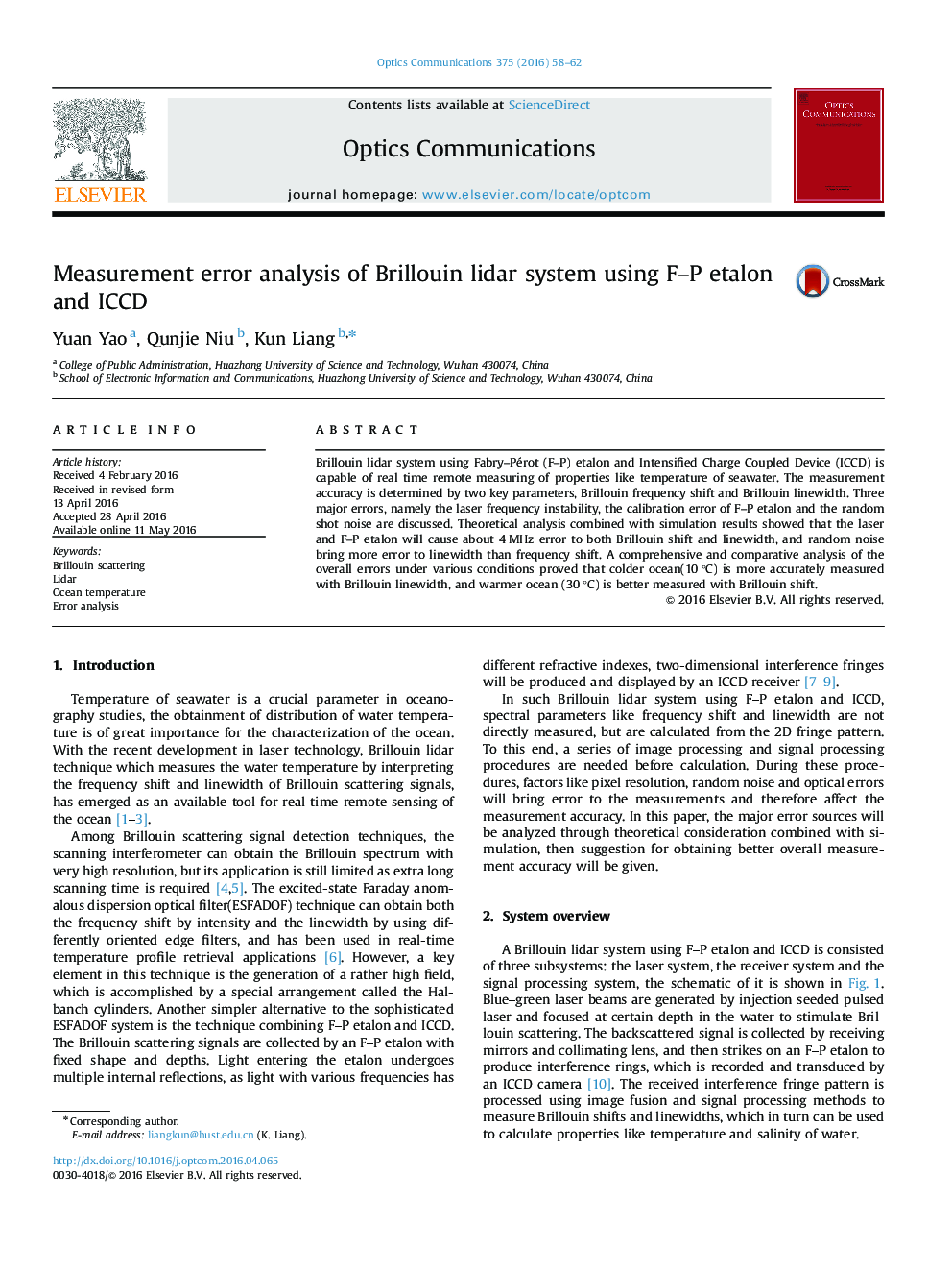| Article ID | Journal | Published Year | Pages | File Type |
|---|---|---|---|---|
| 1533117 | Optics Communications | 2016 | 5 Pages |
•The overall system error of the Brillouin lidar system using F–P etalon and ICCD is discussed for the first time.•Three major kinds of errors and their impacts to the Brillouin shift and linewidth measurement are modeled and analyzed through simulated results.•Comparison of ocean temperature measurement error calculated by Brillouin shift and linewidth are made, Suggestions for choosing parameter and the minimal SNR scattering image under different temperature conditions are given.
Brillouin lidar system using Fabry–Pérot (F–P) etalon and Intensified Charge Coupled Device (ICCD) is capable of real time remote measuring of properties like temperature of seawater. The measurement accuracy is determined by two key parameters, Brillouin frequency shift and Brillouin linewidth. Three major errors, namely the laser frequency instability, the calibration error of F–P etalon and the random shot noise are discussed. Theoretical analysis combined with simulation results showed that the laser and F–P etalon will cause about 4 MHz error to both Brillouin shift and linewidth, and random noise bring more error to linewidth than frequency shift. A comprehensive and comparative analysis of the overall errors under various conditions proved that colder ocean(10 °C) is more accurately measured with Brillouin linewidth, and warmer ocean (30 °C) is better measured with Brillouin shift.
